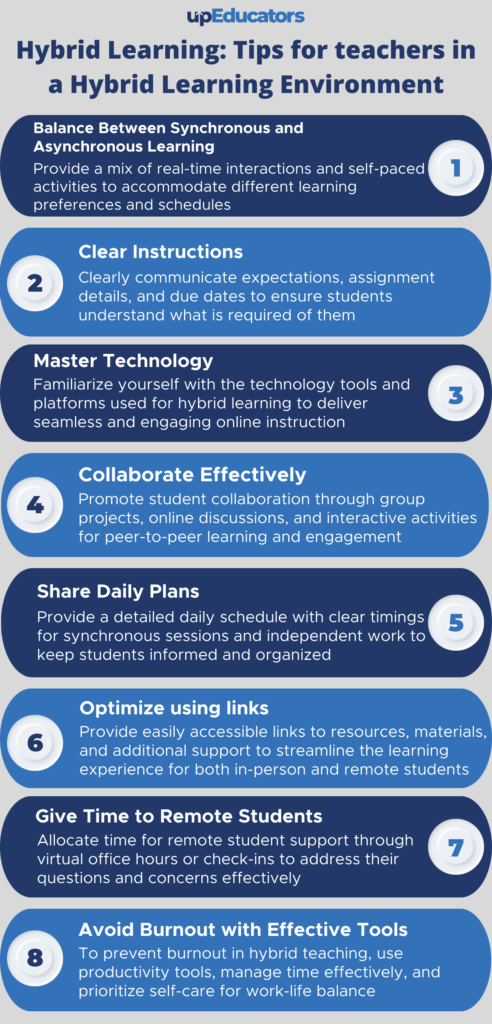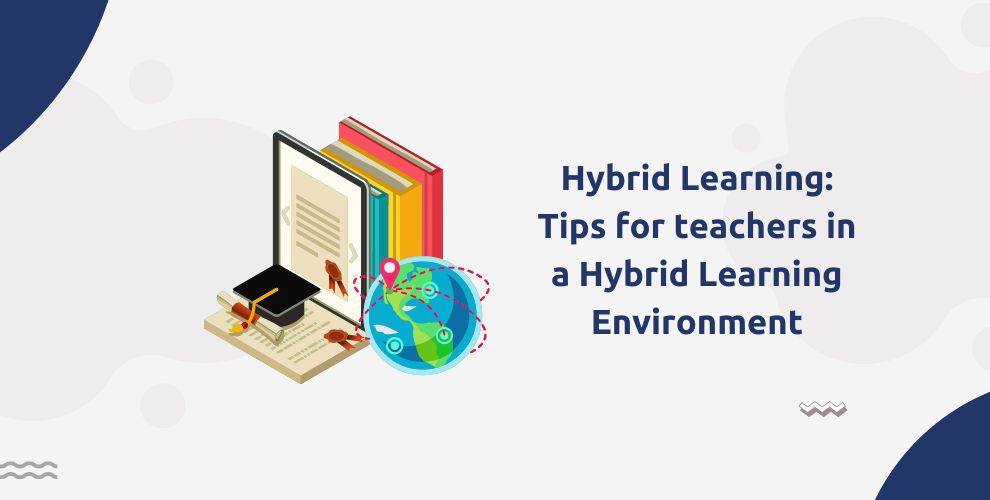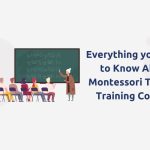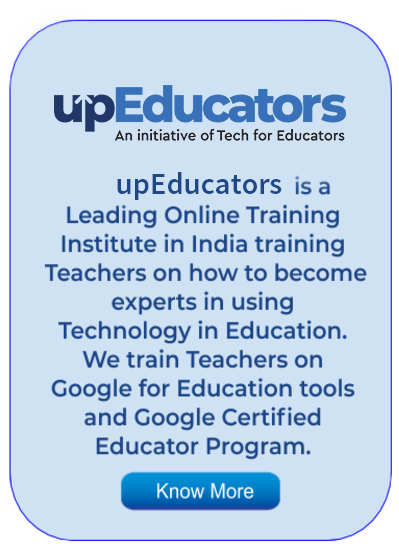A recent survey shows that 67.8 per cent of teachers in India prefer hybrid teaching formats and environments. But what made hybrid schools and formats a big hit in the educational sector? Before the pandemic, only a handful of teachers and institutes were making optimum utilisation of educational tools and technologies. But when the entire world went under a lockdown for an uncertain period, technology became the saviour for teachers and educational institutions.
Since then educators have adopted new learning formats and environments. A hybrid learning environment is one of the most popular learning models in the present scenario. Through hybrid teaching, many teachers are now able to have access to teaching offline as well as remotely. But what is hybrid learning and how teachers can make the most out of it?

What is Hybrid Learning?
A hybrid learning environment combines both online and offline learning opportunities. This can mean providing students with access to online resources and materials, as well as opportunities to engage in face-to-face learning experiences. Hybrid learning environments can offer a more flexible and personalized approach to education, as they can be tailored to meet the individual needs of each student.
Hybrid learning environments have become increasingly popular in recent years, as they offer many advantages over traditional educational models.
Hybrid learning environments offer many benefits to both students and instructors. For students, hybrid courses can provide a more flexible and convenient learning experience. For instructors, hybrid courses can be a more efficient way to deliver content and assess student learning.
Tips for Teachers for Hybrid Teaching
Teaching in a hybrid learning environment can be a challenging job. It involves using collaboration skills, digital skills and even organisational skills. But how teachers can ensure they make the most out of their hybrid teaching experiences?
upEducators has trained 4000+ educators in learning digital skills and pedagogies. Hundreds of educators trained by our expert trainers have shared their essential knowledge of teaching in hybrid and online learning environments. Through this blog, we have curated a list of the most useful and recurring tips given by experienced teachers. So let’s have a look at some of these tips and tricks.
Balance between Synchronous and Asynchronous lessons
Teachers must know how to balance synchronous and asynchronous lessons in a hybrid learning environment. With synchronous lessons, teachers can provide immediate feedback to students and ensure that all students are on the same page. Asynchronous lessons, on the other hand, allow students to work at their own pace and provide more flexibility for students who have different learning styles.
Clear Instructions
In a hybrid learning environment, teachers must provide clear instructions to both online and in-person students. This can be done through a variety of methods, such as creating a detailed lesson plan, providing a list of resources, or recording a video lesson. All students must have access to the same information so that they can be successful in class.
With online students, it is also important to provide clear instructions on how to access and submit assignments. Many students are not familiar with online learning platforms, so it is important to provide step-by-step instructions.
Master Technology
Teachers need to be proficient in technology to be able to teach in a hybrid environment. A hybrid environment has some students learning in the classroom and others learning remotely. To effectively teach in this type of environment, teachers need to be able to use technology to manage both groups of students. This includes being able to use apps and programs to keep track of assignments and progress, as well as being able to use video conferencing and other tools to communicate with students who are learning remotely.
Collaborate Effectively
In a hybrid learning environment, teachers need to be able to manage different tasks and priorities. They need to be able to plan and prepare for both in-person and online instruction, and they need to be able to respond to the needs of their students in a timely and effective manner.
Success in a hybrid learning environment requires collaboration skills from all teachers. By developing and honing these skills, we can ensure that our students have the best possible chance for success.
Share daily plans
When teachers share their daily plans with students, it helps everyone stay on track in a hybrid learning environment. This way, students know what to expect each day and can plan accordingly. Teachers can also use this opportunity to answer any questions students may have.
Sharing daily plans also helps teachers keep track of what students are doing and how they are progressing. This information can be used to tailor future lessons and make sure that everyone is on the same page.
Optimize using links
In a hybrid learning environment, teachers must optimize lessons using links. This is because links can help connect students with online resources, which can supplement and reinforce what is being taught in the classroom. Additionally, links can also help students stay engaged and motivated, as they can provide a sense of interactivity and connection.
Give time to remote students
Giving extra time to remote students is essential in a hybrid learning environment. To provide an equitable education to all students, it is important to consider the needs of both groups when designing a hybrid learning model.
Remote students often have difficulty accessing the same resources as their in-person peers. They may not have reliable internet access, or they may have other responsibilities that prevent them from being able to attend live classes. As such, it is essential to provide extra time for them to complete assignments and participate in class discussions.
Avoid burnout with effective classroom management tools
The hybrid learning environment presents new challenges for teachers in terms of managing their classrooms. With students attending class in person and online, it can be difficult to keep everyone on track and engaged. However, there are some effective classroom management tools that teachers can use to avoid burnout in this type of environment.
One tool that can be used is a daily or weekly schedule. This can help students know what to expect each day and help keep them on track. Another tool that can be used is a learning management system, which can help teachers keep track of student progress and participation.
The explosion of technology in the classroom has changed the way that teachers teach and the way that students learn. One of the biggest developments in the classroom is the increasing number of students who are learning outside of the classroom via digital learning. One of the biggest questions that teachers have been asking is “how do I prepare my students for learning outside the classroom?” Following the right tips and strategies help teachers deal with a hybrid learning environment.
Author: This article is written by Samiya Rashid for upEducators blog.




